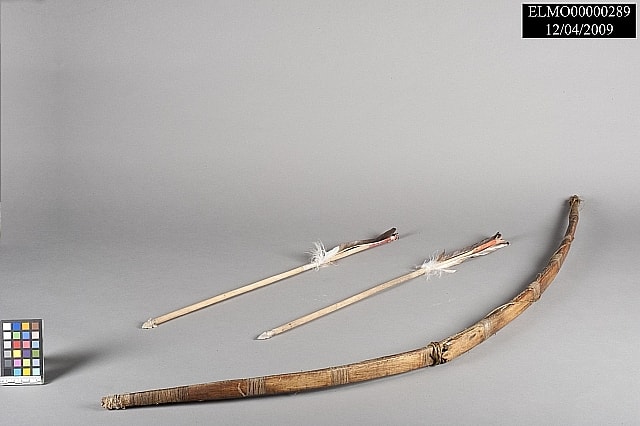- Home
- >
- Preservation Archaeology Blog
- >
- Zing! Bow-and-Arrow Technology in the Ancient Pueb...

The development and spread of bow technology across North America has sparked considerable archaeological debate for more than 100 years. Experts have proposed various ideas about how and why bow technology spread out of Asia between 4,000 and 2,000 years ago, including warfare, hunting strategies, and migratory paths.
We do know that bow technology was present across the North American continent by A.D. 400–800. In the ancient American Southwest, the earliest indications of bow use occur between A.D. 200 and 400. This new technology replaced the millennia-old atlatl and dart weaponry system.
In our paper just published in Evolutionary Anthropology, my coauthor Phil Geib and I focus on the timing of the adoption of bow technology in the northern Puebloan Southwest and its relationship to sedentism, warfare, social coercion, and social complexity. I have been interested in these issues for nearly two decades; working for the Navajo Nation Archaeology Department (NNAD) for nearly fifteen years allowed me to encounter Basketmaker-era sites dating to the critical period of transformation. My colleague Phil Geib has studied bow-and-arrow technology for more than twenty-five years, also through work with NNAD and other research institutions in Arizona and Utah.
In the relatively short span from 400 to 550, most Pueblo groups across the northern Southwest adopted bow-and-arrow technology, made a lasting commitment to corn agriculture, built the first permanent pithouse hamlets and small villages, incorporated beans into their diet, embraced production of durable ceramic containers, and adopted a much more sedentary lifestyle than their ancestors. This period, then, laid the foundation for subsequent developments in Pueblo culture for the next 1,000 years. In our article, we explore the role of the bow in these changes in the first few centuries after its adoption.

8 thoughts on “Zing! Bow-and-Arrow Technology in the Ancient Pueblo Southwest”
Comments are closed.
Explore the News
-
Join Today
Keep up with the latest discoveries in southwestern archaeology. Join today, and receive Archaeology Southwest Magazine, among other member benefits.
I would like to encourage publication in journals that are freely available. The price of articles in commercial journals is outrageous.
The price of publication in freely available journals is also outrageous and born by the author unless they have institutional support that is willing to cover those costs.
Very informative. I was wondering did they mostly use Elm for their bows?
Early pueblo bows were made from a variety of woods – mountain mahogany, scrub/gambel’s oak, greasewood, and willow, among others. I don’t know of any examples of elm but I wouldn’t rule it out.
Arrow foreshafts were made primarily of the same types of wood as bows; the mainshafts were primarily carrizo cane.
Regarding the cost of journals, publishing is expensive. Lacking wealthy benefactors to cover the costs, most journals would not survive without recouping expenses. Nevertheless, I think many scholars make an effort to share their research with a wide audience.
How wonderful that you are publishing information about this topic, Paul. I’ve often wondered the origin of the bow and arrow in the Southwest. Hope to get to read the article soon.
Excellent article in Evolutionary Anthropology. The accompanying photo of a bow and arrows in the “zing” introductory article makes it clear that Pueblo bows were not very powerful. Especially compared with the long bows Cabeza de Vaca reported were used in Florida. Is there any estimate about the strength of Pueblo bows?
A self bow like that of oak could have a draw weight of 30 lbs or slightly more
That’s correct. The simple bows of this early period were not very strong. But, bows improved through time. By AD 1250, recurved or “Turkish” bows were used in the Pueblo Southwest and these bows packed some power.
I’m not aware of any study that has attempted to quantity the relative strengths of various bows across North America. But, such a study would be very interesting.